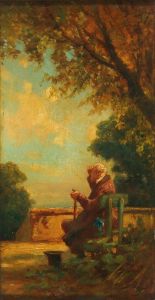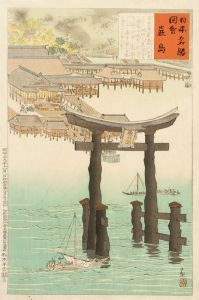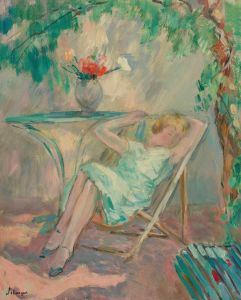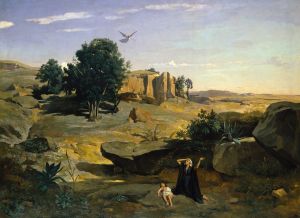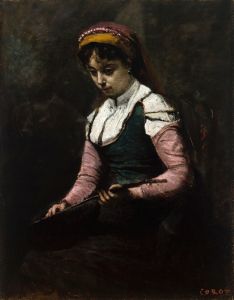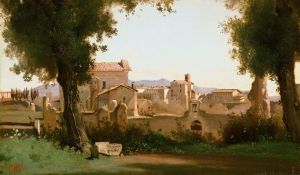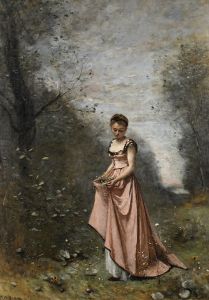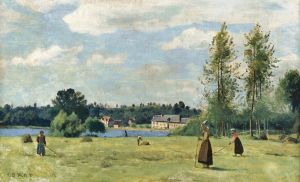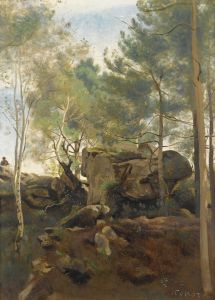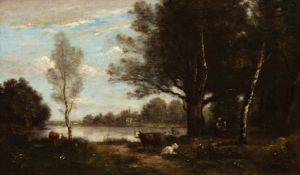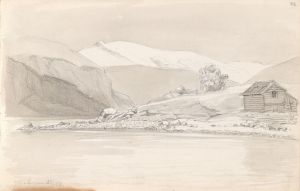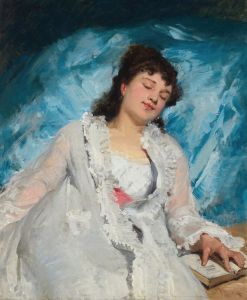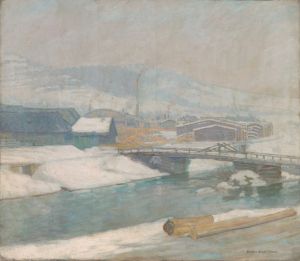
Arleux-du-Nord; le Moulin Drocourt sur la Sensée
A hand-painted replica of Jean-Baptiste-Camille Corot’s masterpiece Arleux-du-Nord; le Moulin Drocourt sur la Sensée, meticulously crafted by professional artists to capture the true essence of the original. Each piece is created with museum-quality canvas and rare mineral pigments, carefully painted by experienced artists with delicate brushstrokes and rich, layered colors to perfectly recreate the texture of the original artwork. Unlike machine-printed reproductions, this hand-painted version brings the painting to life, infused with the artist’s emotions and skill in every stroke. Whether for personal collection or home decoration, it instantly elevates the artistic atmosphere of any space.
Jean-Baptiste-Camille Corot was a pivotal figure in landscape painting during the 19th century, known for his contributions to the Barbizon School and his influence on the Impressionist movement. One of his works, "Arleux-du-Nord; le Moulin Drocourt sur la Sensée," exemplifies his mastery in capturing the serene beauty of the French countryside.
Corot was born in Paris in 1796 and developed an early interest in art, eventually studying under Achille-Etna Michallon, a proponent of neoclassical landscape painting. Corot's style evolved over time, moving from the neoclassical tradition to a more naturalistic approach that emphasized the transient effects of light and atmosphere. This evolution is evident in "Arleux-du-Nord; le Moulin Drocourt sur la Sensée," where Corot's delicate brushwork and subtle use of color create a tranquil scene that captures the essence of the rural landscape.
The painting depicts the Moulin Drocourt, a mill located on the Sensée River in the northern French commune of Arleux-du-Nord. This region, characterized by its picturesque waterways and lush greenery, provided ample inspiration for Corot's work. In this piece, Corot skillfully renders the interplay of light and shadow, using a muted palette to evoke a sense of calm and timelessness. The composition is balanced, with the mill positioned slightly off-center, drawing the viewer's eye into the scene and inviting them to explore the surrounding landscape.
Corot's approach to painting was innovative for his time. He often worked en plein air, or outdoors, to capture the natural light and atmosphere of his subjects. This method allowed him to observe the changing conditions of the landscape and translate them onto canvas with remarkable fidelity. In "Arleux-du-Nord; le Moulin Drocourt sur la Sensée," this technique is evident in the way Corot captures the gentle movement of the water and the soft, diffused light filtering through the trees.
Throughout his career, Corot maintained a deep connection to nature, which is reflected in his work. He was known for his ability to convey the mood and spirit of a place, often imbuing his landscapes with a sense of poetry and introspection. This quality is present in "Arleux-du-Nord; le Moulin Drocourt sur la Sensée," where the tranquil setting invites contemplation and a deeper appreciation for the natural world.
Corot's influence extended beyond his own time, impacting the development of Impressionism and inspiring artists such as Claude Monet and Camille Pissarro. His emphasis on capturing the fleeting effects of light and atmosphere laid the groundwork for the Impressionists' exploration of color and perception. "Arleux-du-Nord; le Moulin Drocourt sur la Sensée" stands as a testament to Corot's skill and vision, showcasing his ability to transform a simple rural scene into a work of enduring beauty.
In summary, "Arleux-du-Nord; le Moulin Drocourt sur la Sensée" by Jean-Baptiste-Camille Corot is a quintessential example of the artist's landscape painting, highlighting his innovative techniques and deep appreciation for nature. Through his delicate brushwork and attention to detail, Corot captures the serene beauty of the French countryside, leaving a lasting legacy that continues to inspire artists and art lovers alike.





